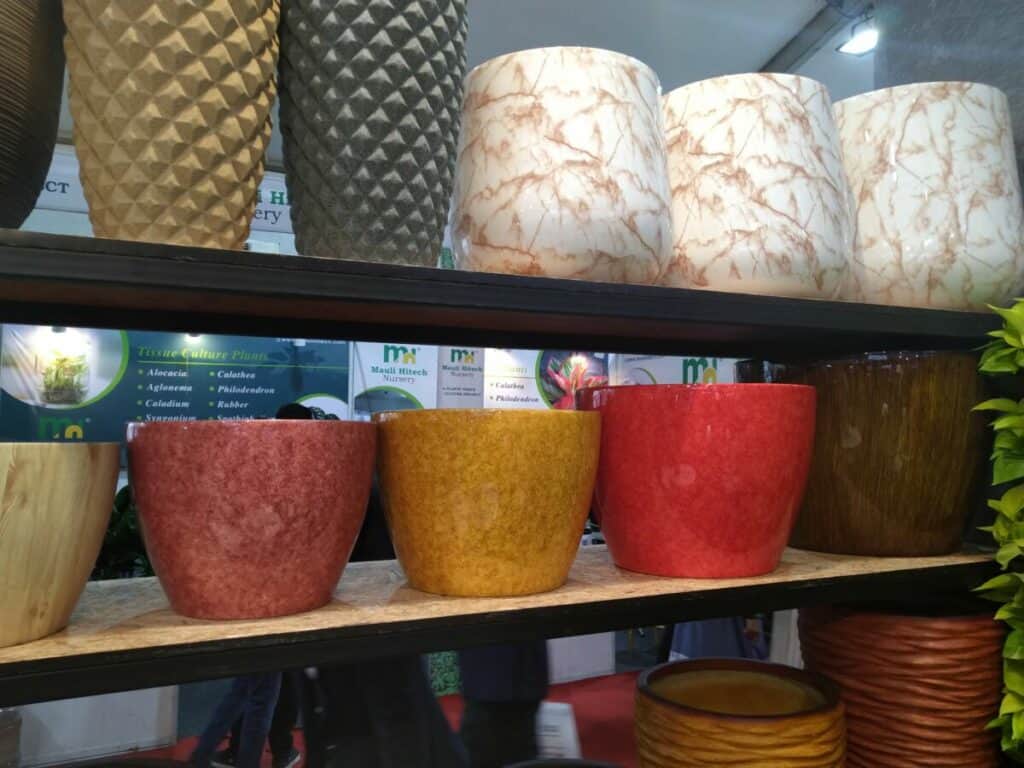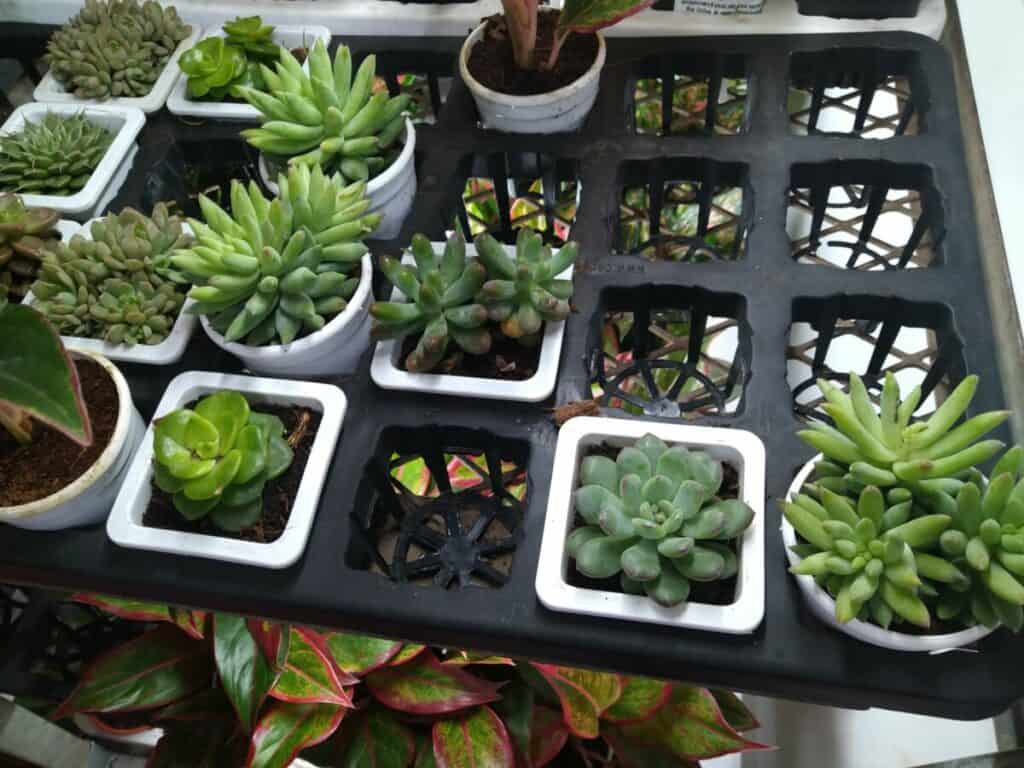You’re happy.
Moving to a new location can be exciting. You’re looking forward to it.
There’s only one problem.
You need to take your potted plant with you. But will this be a problem on the plane?
You can take potted plants on a plant according to the TSA (Transport Security Administration). You’ll need to follow flight regulations and pack the plants safely inside checked luggage or hand luggage depending on the size and weight restrictions.
In this post, I’ll help you know everything about taking a potted plant on a plane. I’ll explain differences between domestic and international flights. I’ll help you learn how to pack the potted plant for such flights.
Let’s take a look.
Can I take a potted plant on a plane?
Let’s start by addressing the most important issue, whether you will be able to get it onto the plane in the first place. On a domestic flight, this will depend on the TSA. In most cases, you’ll get a raised eyebrow. But they will allow you to take the plant onto the plane.
You might also need to think about the rules that your airline has established. Often, these are based on the TSA. So, if you can get through the security checkpoint with your plant, there shouldn’t be any problems getting it onto the plane.
I bought plants on sale from a grower and brought 10 of them “home” to my family in a book bag carry on. No one said anything. – Liz
The rules that you will need to follow will depend on where you are flying. If you are traveling within your state lines, you shouldn’t have any problems. However, things can get a little more complex when you are planning to fly across state lines.
There might be some regulations on the type of plants you will be able to bring with you. You should read through these laws before you go. If you have a banned plant, you won’t be able to take it with you.
If you do, you risk a fine. If the plant isn’t banned, though, you shouldn’t have any problems getting past the state authorities. The states where these laws are the strictest are:
- California
- Florida
- Arizona
- The strictest rules are from Hawaii, which you should treat as akin to international travel.
I asked my fellow gardeners if they have ever carried potted plants on an airplane. Only 5.7% of them had any experience with this. But many of them quietly carried small potted plants in their hand luggage for domestic flights. And did not seem to face any problems

There are also state agriculture regulations you need to check, not just flight regulations. I mailed garlic to California and had to follow their regulations coming into the state. When I received my planting garlic from Keene it had notations on the box to pass their regulations. – Lynda
Can I hand carry plants on an airplane?
You can hand carry plants on an airplane, but you’ll need to follow airline rules. These include limitations on the size of the plant so it fits in the airplane. And the plant will be counted as part of your personal baggage allowance.
On most domestic flights, you shouldn’t have any issues taking plants on a plane with you. There are a few airline rules that you will need to think about, though. These include:
- Size of the plant. You will need to get something that will fit into the overhead luggage or under the seat. The airline should have size guidelines you can use.
- Plants count towards your personal baggage allowance. Because of this, the plant might take the place of your carry-on bag.
Can you take plants on an international flight?
You can take plants on an international flight, but it’s a lot more complicated because of the international laws. Many countries have strict laws about the type of flora and fauna they allow. You’ll need to check these laws when planning your trip.
If your plant is on the list of banned fauna, you won’t be allowed to bring it into the country. How international laws work can be complex. It will often depend on where you are transporting the plant to and from. For example, there might be agreements between countries in the EU.
Even if it is approved, you will often need to apply for a permit before you transport a living organism across the border. When you are doing this, it will go into more detail about the circumstances in which you can transport a plant.
You’ll also need to make sure that you are declaring the plant on your customs form. Border security will want to check it before allowing it into the country. They will look for things like tiny insects, which can disrupt the ecosystem.
To increase your chances of getting through customs, you’ll need to make sure that you are preparing the plants properly. We’ll discuss how to do this later.
In a lot of countries it is not allowed. Also, exotic plants with no predators can spread, for ex reynoutria here in Belgium, and take over – Gerda
How do you pack plants for a flight?
Once you know the rules you need to follow when transporting your plant, it’s time to turn our attention to preparing it for the flight.
How to pack plants for domestic flights
The good news is that domestic flights are shorter, with less rigorous border rules. Because of this, you will need to spend less time preparing your plants for the journey. Here are some tips you can use:
1. Prepare the plant before the trip
The first thing that you need to do is make sure that you get the plant into the ideal condition to travel. Here, you will need to trim back any long branches or vines, making it easier to lift. It’s also important to trim back any dead branches or leaves.
2. Use a nursery pot
A ceramic pot might look nice, but it isn’t the best option for plane travel. There is a risk that the pot will get cracked. Plus, this is a good way of reducing weight.

3. Water the plant
Before your trip, you will need to give the plant some water. This will prevent it from getting dehydrated on the trip. But you don’t want the soil to be too wet. Not only will this cause problems with the airlines, but it also increases the risk of root rot.
4. Cover the pot with a plastic bag
This will prevent the soil and moisture from spilling onto the plane or into your bag and causing a mess. On most domestic flights, this will be enough. Though if you are going on a particularly long flight, it might be best to use the “bare roots” approach below.
5. Avoid metal
Finally, the plant will be treated as a piece of carry-on luggage. Because of this, it will need to pass through a metal detector test before it gets onto the plane. To make things easier, remove any metal before the trip. If you want to bring water, keep it in a clear container.
Put in plastic bag and place on your carry on bag. Remove most dirt and Wrap roots in moist paper towels. – Linda
How to pack plants for international flights
If you are going on an international flight, you will need to use the “bare roots” technique. This will strip away any soil or dirt, which might cause problems at customs. Here are the steps to follow to prepare plants in this way:
- Ease the plant out of the pot.
- Try to remove off as much soil as you can
- Gently shake the roots in a bowl of warm water. This should dislodge the remaining soil.
- Pat down the roots to remove any excess moisture
- Wrap the plant in a newspaper to keep it moist.
- When you get home, you’ll need to re-pot the plant and give it plenty of water.
Are dried plants and seeds allowed on planes?
Dried plants and seeds are allowed on planes, but you need to store them in a clear Ziploc bag. Depending on the laws in the state or country, you might need to file for a permit before they can enter the country.
Are sharp succulents allowed on planes?
Sharp succulents are allowed on domestic planes, but you should contact the airlines before you carry them. It may be more complicated to carry sharp succulents on international flights as they have stricter regulations. So it’s best to check the flight regulations.


Fact Checked, Written, and Published by Kevin Rodrigues
Kevin is the founder of Gardening Mentor, a website that aims to teach people to grow their own food in a limited space. As a self-taught gardener, Kevin has spent several years growing plants and creating gardening content on the website. He is certified in Home Horticulture and Organic Gardening from Oregon State University. He has a Post Graduate Diploma in Horticulture and Landscape Gardening from Mumbai University.
Read more
